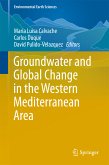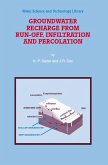This book presents a novel approach to studying the groundwater dynamics of and characterising karst aquifers. The content is based on long-term monitoring of groundwater parameters in the epiphreatic caves of a selected karst aquifer: part of the classical recharge area of Ljubljanica River, Slovenia. The recorded data was analysed on the basis of the recharge to the system, which is controlled by outflow from the Planinsko Polje, and on the basis of the known and inferred geometry of the karst conduit system. The book presents numerically tested conceptual models of the observed conduit system, which offer new insights into its structure and function. In closing, the author stresses the importance of caves as groundwater monitoring sites and provides new tools for interpreting cave water level hydrographs. Although the book focuses on a specific site, the methodology introduced here can be applied to numerous other karst systems, lending it considerable practical relevance.
Dieser Download kann aus rechtlichen Gründen nur mit Rechnungsadresse in A, B, BG, CY, CZ, D, DK, EW, E, FIN, F, GR, HR, H, IRL, I, LT, L, LR, M, NL, PL, P, R, S, SLO, SK ausgeliefert werden.









